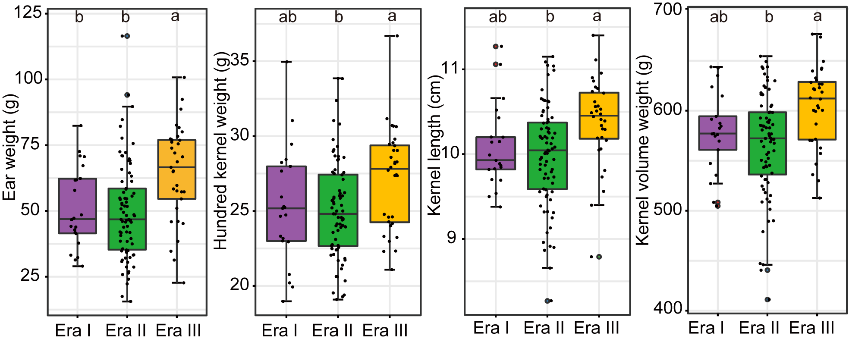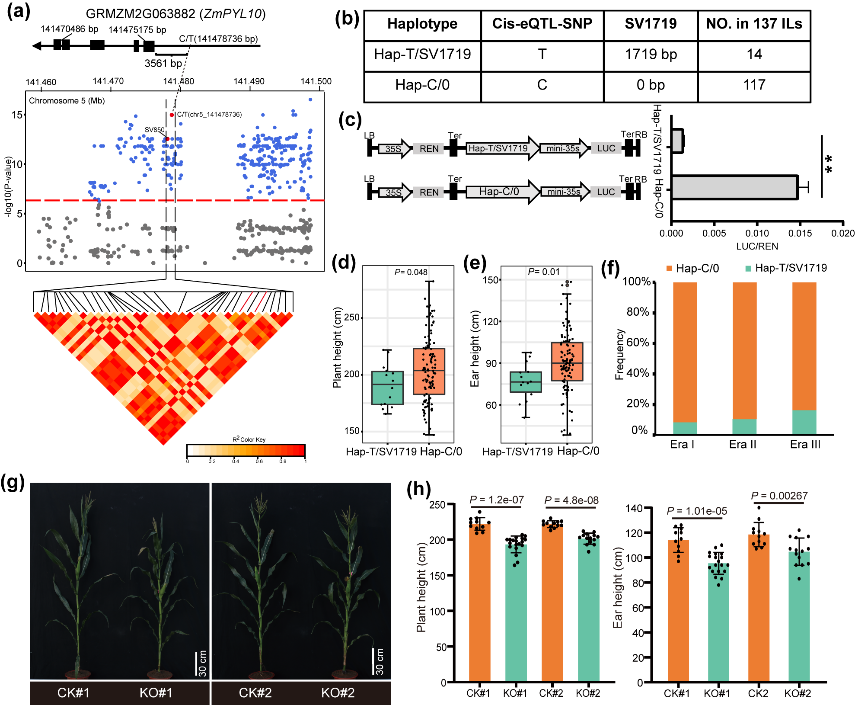Recently, researchers from Biotechnology Research Institute (BRI) of Chinese Academy of Agricultural Sciences (CAAS), in collaboration with South China Agricultural University, Inner Mongolia University,Jilin Academy of Agricultural Sciences etc. reported their research results in a paper entitled “Gene expression and expression quantitative trait loci analyses uncover natural variations underlying the improvement of important agronomic traits during modern maize breeding” published in the internationally reputed journal “The Plant Journal”.
Maize (Zea mays L.) is a major staple crop worldwide, and during modern maize breeding, cultivars withincreased tolerance to high-density planting and higher yield per plant have contributed significantly to theincreased yield per unit land area. Systematically identifying key agronomic traits and their associated genomicchanges during modern maize breeding remains a significant challenge because of the complexity ofgenetic regulation and the interactions of the various agronomic traits, with most of them being controlledby numerous small-effect quantitative trait loci (QTLs). Here, researchersperformed phenotypic and gene expressionanalyses for a set of 137 elite inbred lines of maize from different breeding eras in China. They found fouryield-related traits are significantly improved during modern maize breeding. Through gene-clustering analyses, they identified four groups of expressed genes with distinct trends of expression pattern change acrossthe historical breeding eras. In combination with weighted gene co-expression network analysis, they identifiedseveral candidate genes regulating various plant architecture- and yield-related agronomic traits, suchas ZmARF16, ZmARF34, ZmTCP40, ZmPIN7, ZmPYL10, ZmJMJ10, ZmARF1, ZmSWEET15b, ZmGLN6 andZm00001d019150. Further, by combining expression quantitative trait loci (eQTLs) analyses, correlation coefficientanalyses and population genetics, they identified a set of candidate genes that might have been underselection and contributed to the genetic improvement of various agronomic traits during modern maizebreeding, including a number of known key regulators of plant architecture, flowering time and yieldrelatedtraits, such as ZmPIF3.3, ZAG1, ZFL2 and ZmBES1. Lastly, they validated the functional variations inGL15, ZmPHYB2 and ZmPYL10 that influence kernel row number, flowering time, plant height and earheight, respectively. Their results demonstrates the effectiveness of our combined approaches for uncoveringkey candidate regulatory genes and functional variation underlying the improvement of important agronomictraits during modern maize breeding, and provide a valuable genetic resource for the molecularbreeding of maize cultivars with tolerance for high-density planting.
Doctoral student Changyu Li (BRI of CAAS and Inner Mongolia University) and postdoctorYaoyao Li (South China Agricultural University) are the co-first authors of this research. Professor Haiyang Wang (South China Agricultural University), Dr. Baobao Wang(BRI of CAAS), and Professor Zhi Qi (Inner Mongolia University) are the corresponding authors. This work was supported by the National Natural Science Foundationof China (32022065, 32272189), National Key R&D program ofChina (2021YFF1000301, 2022YFD1201200), the Agricultural Scienceand Technology Innovation Program of the Chinese Academyof Agricultural Sciences (CAAS) and a project from HainanYazhou Bay Seed Lab (B21HJ8101).
More information can be found through the link:https://doi.org/10.1111/tpj.16260

Figure 1.Four yield-related traits were significantly improved during modern breeding of maize (Zea mays L.) in China.

Figure 2.Expression variation of ZmPYL10 contributes to maize height variation. |